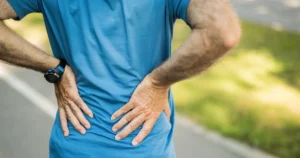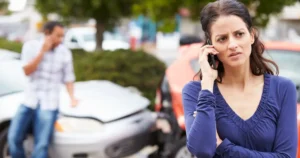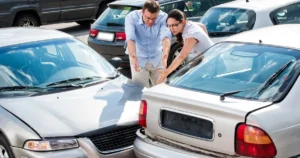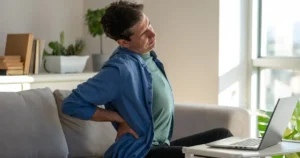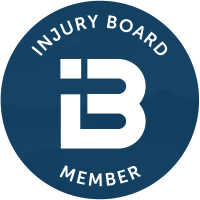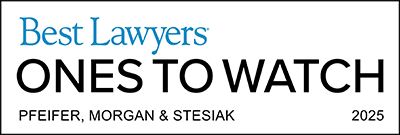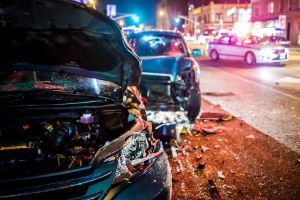 Some types of car accidents happen more often than others, which is why you should learn strategies to reduce your risk of being involved in these kinds of crashes.
Some types of car accidents happen more often than others, which is why you should learn strategies to reduce your risk of being involved in these kinds of crashes.
Below, our South Bend car accident lawyers review five of the most common types of car crashes and provide tips that could help you avoid these accidents.
If you or a loved one has been injured in any type of auto accident, you may have legal options. Contact our experienced attorneys to find out if you could be entitled to compensation for the damages you have experienced.
1. T-Bone Accidents
These are crashes where the front of one car collides with the side of another. They often occur at four-way intersections where traffic crosses from either side.
Some of the common causes of these crashes include drivers running red lights or stop signs or attempting to make a left turn and failing to yield to oncoming traffic.
T-bone accidents can cause severe injuries no matter where a car is hit or the speed of the collision.
You can reduce your chances of being involved in this type of crash by coming to a complete stop at all red lights and stop signs. You also need to make sure to look both ways for oncoming traffic at all intersections, even when you have the right of way.
Following the speed limit also helps, as it gives you more time to stop when a light changes.
2. Low-Speed Crashes
These are crashes that occur when the vehicle or vehicles involved are traveling at 10 mph or less. These accidents often occur in parking lots, driveways or residential areas and can involve other cars or pedestrians.
Regardless of the speed, these crashes can cause significant damage to vehicles. Drivers, passengers and pedestrians can also suffer injuries that require medical care.
If you are backing out of a driveway or parking space, make sure to always look behind you. Do not rely only on your mirrors or backup cameras.
If you are in a residential area, obey the speed limit and watch for pedestrians, particularly at night.
3. Rear-End Collisions
These are accidents where one car crashes into the back of another. These often occur in heavy traffic when one vehicle is tailgating another – the lead vehicle hits the brakes but the other one does not react quickly enough to avoid a collision.
Rear-end collisions can cause personal injuries such as whiplash, which are expensive to treat. Unfortunately, these crashes are often caused by distracted or aggressive drivers, which means they could have been prevented.
The best way to avoid this type of crash is to maintain a safe following distance with the vehicle in front of you.
A good rule of thumb is to maintain two to three seconds between the lead car’s rear bumper and your front bumper. You can calculate this by counting the seconds that pass from when a fixed object passes the lead car’s bumper and when your front bumper reaches the object.
You also need to avoid all forms of distracted driving, because they divert your attention and vision from the road, giving you less time to react to the car in front of you.
Common examples of driving distractions include:
- Texting
- Talking on a cellphone
- Eating or drinking
- Personal grooming
- Talking to passengers
- Making changes to the radio
If you are the lead car, keep an eye on the cars behind you. If a car is tailgating you, try to switch lanes to get away from it. Otherwise, you should try to avoid slamming on the brakes while the car is behind you.
4. Merging Accidents
These could also be called sideswipe accidents. They occur when vehicles are merging into one lane and one car sideswipes another.
These accidents are often caused by the merging driver, as he or she failed to check blind spots before attempting to change lanes.
You need to be extra cautious when merging and always check your blind spots before making a move. You should also slow down when merging, as this will allow you more time to maneuver to avoid a crash.
5. Head-On Collisions
This is one of the most dangerous types of car crashes, as it is more likely to result in severe injuries or death.
These accidents typically occur when a car swerves into oncoming traffic. There are other cases where drivers head the wrong way on highways or other major roads.
There are also head-on collisions with fixed objects, such as trees, construction equipment, signs and lampposts.
Head-on collisions are likely to cause a variety of severe injuries to various body parts, including:
- Neck
- Spine
- Back
- Arms
- Chest
- Legs
- Ribs
- Internal organs
You can reduce the risk of these types of crashes by never driving while impaired, distracted or drowsy. These things make it more likely you will make a wrong turn or swerve into oncoming traffic.
Schedule Your Free Legal Consultation Right Now
Pfeifer, Morgan & Stesiak has a successful track record of helping victims of negligence recover fair compensation for their injuries.
Our trusted personal injury attorneys in South Bend are ready to help you obtain the compensation you are entitled. We take cases on a contingency fee basis, which means your initial consultation is free and you will not be charged legal fees unless we recover compensation.
We understand how important compensation can be in helping accident victims get back on their feet, physically, financially and emotionally.
Need some help? Call us at (574) 444-0741.

